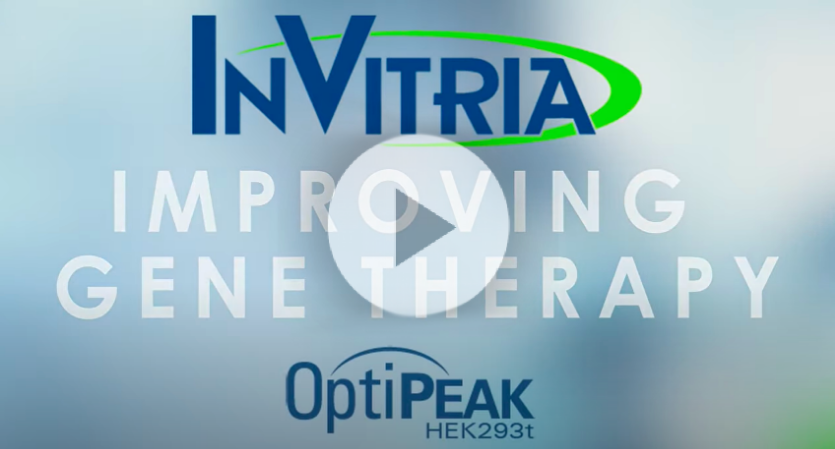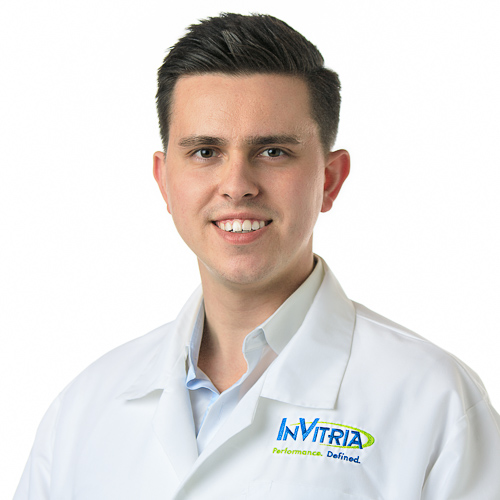Decades of intensive research, trial, and error have finally overcome the enormous technical challenges involved in developing safe and effective cell and gene therapies
Signaling that the fields of cell and gene therapy are finally coming into their own, 2017 saw the approval of two cellular immunotherapies—tisagenlecleucel (Kymriah) for pediatric acute lymphoblastic leukemia, and axicabtagene ciloleucel (Yescarta) , for adult diffuse large B-cell lymphoma—as well as a gene therapy based on the adeno-associated virus vector, voretigene neparvovec (Luxturna) for Leber’s congenital amaurosis. The FDA now has hundreds of IND applications related to these fields in its review pipeline, and has predicted that by 2025, there will be between 10 and 20 approvals per year in this area.
As the industry reaches critical mass, however, it faces new challenges that have little to do with mechanisms of action or viral genetics.
Manufacturing scalability, clinical and manufacturing regulatory compliance, and a reliable supply of consistent, traceable, well-characterized raw materials for biomanufacturing present looming challenges to commercialization of cell and gene therapies
Cell and gene therapy technologies like CAR-T, adeno-associated virus vectors, and lentivirus-based vectors depend on the production of recombinant virus particles in a host cell line prior to end-target transfection.
The adherent, immortalized, human cell line HEK293t has become the host of choice for therapeutic viral-vector production due to its versatility, durability of expression, and well-characterized clinical safety profile
During R&D, HEK293t may be maintained in standard tissue culture flasks. For commercial-scale production they are typically expanded in a bioreactor setup. Aside from glucose, pH buffers, and basic salts, the media that support the growth and expansion of HEK293t and other cultured eukaryotic cells have to be supplemented with specific proteins and nutrients. In research environments, the most common and convenient source of these essential components is fetal bovine serum (FBS) supplied as a product of the commercial beef industry. While FBS destined for the laboratory is sterile-filtered at 0.1 μm during production, it nevertheless remains a complex and undefined substance of variable composition. Even filtered FBS may contain viral RNA and DNA, prion proteins, undefined antigenic molecules, as well as bovine cytokines, hormones, and other substances that can potentially affect cell performance in culture, manufacturing yield, product validation, and clinical safety of the downstream viral isolate. The presence of these undefined contaminates is partly why “heat inactivation” of FBS—and re-filtration of resulting protein aggregates—is part of standard tissue-culture protocols in many research laboratories.
While these undesirable characteristics of FBS have been accepted in the past out of necessity, they can present hurdles for patient safety and regulatory compliance. Further, FBS is not a limitless resource. There is not enough volume to sustain the projected demands of the fast-growing biomanufacturing industry, and production will always be subject to fluctuations in the global, agricultural supply chain.
InVitria’s OptiPEAK line of animal-free, chemically defined, complete media products are specifically tailored to maximize performance, consistency, safety, and efficiency of HEK293t and other cultured cell lines without supplemental serum
Like all of InVitria’s products, every protein component in OptiPEAK HEK293t Complete Media is fully recombinant, fully human in sequence, and manufactured in the US, in a tertiary-level, animal component-free, ISO 9001 certified facility. InVitria media and their components do not contain undefined plant hydrolysates, human blood-derived components, or animal-derived components.
OptiPEAK HEK293t Complete Media has been optimized to promote superior expansion kinetics of HEK293t both in tissue culture and in scalable bioreactor format for clinical and commercial manufacturing. For example, InVitria has collaborated with PALL Biotech to validate the use of OptiPEAK HEK293t in its iCELLis line of bioreactors.
Advantages to using OptiPEAK HEK293t over FBS-supplemented media in the bioreactor included:
- 16% reduction in cell doubling times
- Higher cell density on day of transfection
- More rapid attachment to carriers
- Greater glucose consumption
- Increased reporter gene expression
- No foaming of media
- Higher linear feed rate
Transitioning HEK293t and other mission-critical cell cultures can have extensive performance, yield, and safety benefits for basic and translational research, clinical development, and commercial-scale biomanufacturing
To learn more about transitioning your cell culture system to complete, chemically defined, serum-free and animal-free media, please see InVitria’s Custom Media Formulation services page.
To introduce a way to improve performance, consistency, and safety of your HEK293-based production InVitria’s team released a new video that talks about the serum-free chemically defined media product, OptiPEAK HEK293t Complete Media.
Interview With Artur Tkachev, Product Applications Specialist with InVitria
Could you identify the key challenges in viral vector manufacturing today?
Three of the most significant challenges in viral vector manufacturing are:
- capacity constraints associated with high demand for key raw materials
- consistent, reliable quality and safety of those raw materials, and
- functional virus titer production and its effect on therapy costs
One of the principal raw materials subject to capacity constraints is fetal bovine serum (FBS). FBS is used ubiquitously in the production of gene therapies and vaccines. Together with explosive growth in the field of gene and cell therapy, the massive efforts in vaccine development associated with COVID-19 have created excessive demand for serum that has limited scale-up, extended production lead times, and caused a 300+% spike in the price of FBS.
We don’t see this demand resolving in the future; while most of the gene therapies that are already approved by regulatory agencies were designed to target rare diseases, the current development and approval pipeline is loaded with therapies for more prevalent diseases with much larger target populations. It’s an exciting time for the field of gene therapy and for patients who will benefit from these advancements. At the same time, that growth is going to exacerbate the demand, leading to even higher projected pricing for these raw materials.
Contamination with viral or other adventitious pathogenic agents is another serious concern about FBS used in these advanced therapies. As a complex biological product, serum is inherently undefined with highly variable lot-to-lot composition. That limitation necessitates repeated lot qualification for use in production and stringent quality control associated with raw material qualification for every production run. The use of blood-derived components also slows down the regulatory process and delays the approval of new gene therapies and vaccines.
The problems with FBS create a dilemma for manufacturers because a transition to reduce-serum or serum-free cell culture can negatively affect viral titer and performance.
InVitria’s primary focus is helping companies solve these safety and supply chain challenges while maintaining or even improving end-product yield and performance. Because they are fully recombinant and produced in a non-animal host, all of the products in the company’s portfolio are free from blood-derived or animal components, cost-effective, consistent and predictable in quality and composition, and not subject to the same supply-chain constraints as FBS sourced from the beef industry. InVitria’s products are wholly suited to addressing the productivity and supply-chain concerns of viral vector manufacturing and scale-up for gene therapy commercialization.
Why has serum continued to be used in production when most antibody-based biologics are manufactured without serum?
Historically, serum has been the only source of critical proteins and attachment factors necessary for proliferation and productivity of adherent cells—such as HEK293—used in production. Use of serum is well-ingrained within the practice, protocols, and literature about cell culture, and, due to sometimes disappointing results from serum-free alternatives, many researchers have preferred established protocols that have proven themselves at smaller scales in academic environments.
FBS use presents a significant challenge with scale-up for commercial clinical applications. As outlined above, serum is becoming prohibitively expensive for scale-up and it introduces uncertainties into the quality and regulatory equation. It also creates technical problems in bioreactor set-ups. This helps explain why the majority of antibody manufacturing processes are scaled-up using variants of the CHO cell line that have been selected for growth and production in serum-free suspension cell culture.
A challenge for gene therapy is that it relies on adherent cell lines like HEK293 and VERO, which can be grown in suspension culture but with significantly lower transfection efficiency and reduced production of functional viral titers compared to adherent cultures. Suspension culture technologies continues to evolve and, with time and research, are certain to overcome these challenges.
InVitria’s OptiPEAK HEK293t serum-free, chemically defined medium presents an immediate solution that combines the production advantages of adherent systems with the safety and reliability of serum-free conditions for viral-vector manufacturing. OptiPEAK HEK293t has been validated for high-yield viral production in both 2D flatware and commercial-scale 3D bioreactors such as Pall Biotech’s iCELLis, enabling the high-performance serum-free approach to viral vector production for emerging gene therapies.
How does OptiPEAK HEK293t media compare with media containing serum for viral vector manufacturing? Can serum be completely removed from the formulation?
The serum used in traditional cell culture media is a blood-derived product sourced either as a byproduct of the commercial beef industry, from donated human blood and plasma, or from other mammalian sources. Even some of the “xeno-free” media still contain serum and other purified human and animal components. As described above, these sources introduce unpredictability and uncertainty in both the supply chain and in safety and performance.
OptiPEAK HEK293t is a 100% chemically defined media that supplies all essential nutrients, attachment and growth factors, and extracellular proteins required for optimal cell growth and virus production in fully recombinant form. OptiPEAK HEK293t is free of any and all blood-derived products, undefined plant hydrolysates, or other animal or human-derived components. The mediumenables the complete elimination of serum from viral vector manufacturing while providing growth kinetics, transfection efficiency, and viral titer productivity that are superior to serum-containing media. Additionally, OptiPEAK HEK293t is optimized for easy transition away from serum-based systems without redesign of the production process.
Can OptiPEAK HEK293t media work in adherent and suspension production systems?
OptiPEAK HEK293t is designed to support expansion of adherent HEK293 cell lines. For more information about InVitria’s expertise in suspension HEK293 cultures, please contact our Product Applications Team at InVitria.com Contact Us
Does OptiPEAK HEK293t media support scalability in viral vector manufacturing?
InVitria’s OptiPEAK HEK293t has been specifically optimized to support scale-up from 2D expansion to large-scale bioreactors. For example, InVitria has collaborated with PALL Biotech to validate the use of OptiPEAK HEK 293t in its iCELLis line of bioreactors. Advantages to using OptiPEAK HEK293t over serum-supplemented media in the bioreactor included:
- 16% reduction in cell doubling times
- Higher cell density on day of transfection
- More rapid attachment to carriers
- Increased gene of interest expression
- Eliminated foaming of media at higher linear feed rate


